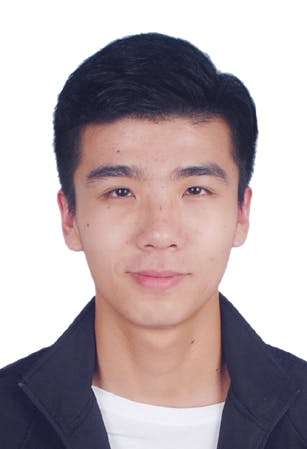Xiangbo Gao
I love to use deep learning to solve real-world problems.
About me
Autonomous Driving | Multi-agent Collaborative Perception | Aerial & Grounded Agent Cooperation | Current PhD @ TAMU | MS @ Umich | BS @ UCI
- Location:Texas A&M University, College Station, TX
- Age:25
- Nationality:China
- Interests:Skiing, Rock climbing
- Study:Texas A&M University, College Station, TX
Publications
Selected
STAMP: Scalable Task- And Model-agnostic Collaborative Perception
Xiangbo Gao, Runsheng Xu, Jiachen Li, Ziran Wang, Zhiwen Fan, Zhengzhong Tu
ICLR 2025
STAMP is a new framework for multi-agent collaborative perception in autonomous driving that enables diverse vehicles to share sensor data efficiently. Using adapter-reverter pairs to convert between agent-specific and shared feature formats in Bird`s Eye View, it achieves better accuracy than existing methods while reducing computational costs and maintaining security across heterogeneous systems.
MambaST: A Plug-and-Play Cross-Spectral Spatial-Temporal Fuser for Efficient Pedestrian Detection
Xiangbo Gao, Asiegbu Miracle Kanu-Asiegbu, Xiaoxiao Du
ITSC 2024
MambaST is a new framework for pedestrian detection that combines RGB and thermal camera data while leveraging temporal information. It uses a novel Multi-head Hierarchical Patching and Aggregation structure with state space models to efficiently process multi-spectral data, achieving better results on small-scale detection while being more computationally efficient than transformer-based approaches.
Scale-free and Task-agnostic Attack: Generating Photo-realistic Adversarial Patterns with Patch Quilting Generator
Xiangbo Gao, Cheng Luo, Qinliang Lin, Weicheng Xie, Minmin Liu, Linlin Shen, Keerthy Kusumam, Siyang Song
ICASSP 2024
PQ-GAN is a novel scale-free generator for adversarial attacks that works on images of any size. Unlike previous methods limited to local or fixed-scale attacks, it demonstrates superior transferability, defense resistance, and visual quality when tested against other attack methods on ImageNet and CityScapes datasets.
Sample Hardness Based Gradient Loss for Long-Tailed Cervical Cell Detection
Minmin Liu, Xuechen Li, Xiangbo Gao, Junliang Chen, Linlin Shen, Huisi Wu
MICCAI 2022
A new Grad-Libra Loss method improves cancer cell detection in imbalanced cervical cancer datasets by adjusting for both sample difficulty and category distribution, achieving 7.8% better accuracy than standard approaches.
On Submission
AutoTrust: Benchmarking Trustworthiness in Large Vision Language Models for Autonomous Driving
Shuo Xing, Hongyuan Hua, Xiangbo Gao, Shenzhe Zhu, Renjie Li, Kexin Tian, Xiaopeng Li, Heng Huang, Tianbao Yang, Zhangyang Wang, Yang Zhou, Huaxiu Yao, Zhengzhong Tu
Arxiv
AutoTrust is a groundbreaking benchmark designed to assess the trustworthiness of DriveVLMs. This work aims to enhance public safety by ensuring DriveVLMs operate reliably across critical dimensions.
Resume
Education
Computer Science Ph.D. Candidate
Robotics M.S. Student
B.S. in Computer Science | B.S. in Mathematics
Summer Session
Employment
Graduate Research Assistant
Graduate Research Assistant
Graduate Research Assistant
Perception Research Intern
Full-stack Software developer
VR Software developer
Competitions
CVPR Camera-based online HD map construction challenge 2023
Result: Rank 13th in CVPR Camera-based online HD map construction challenge 2023
UCI 2020 Machine Learning Hackathon
1st place on the subproject of 3D Human Pose with Scene Constraints
Google Hash Code 2020 Algorithms Competition
Result: 2nd place / 13 at UCI | Team name: ε=.99
Netease Hackathon Competition
Outstanding Award

